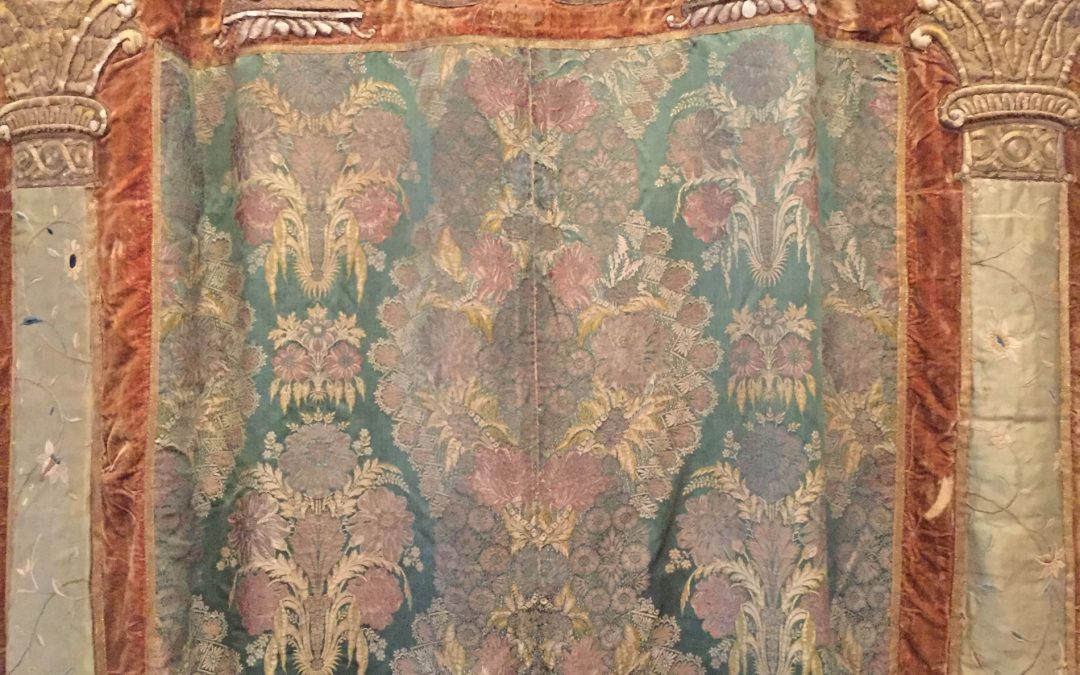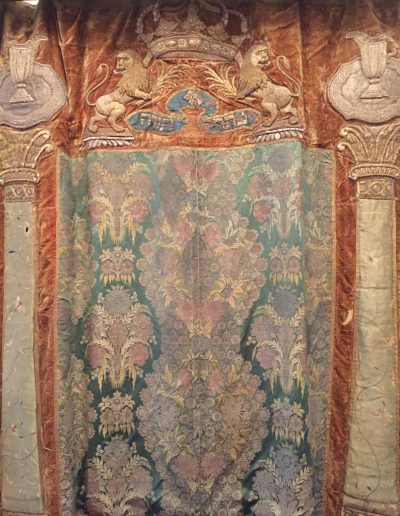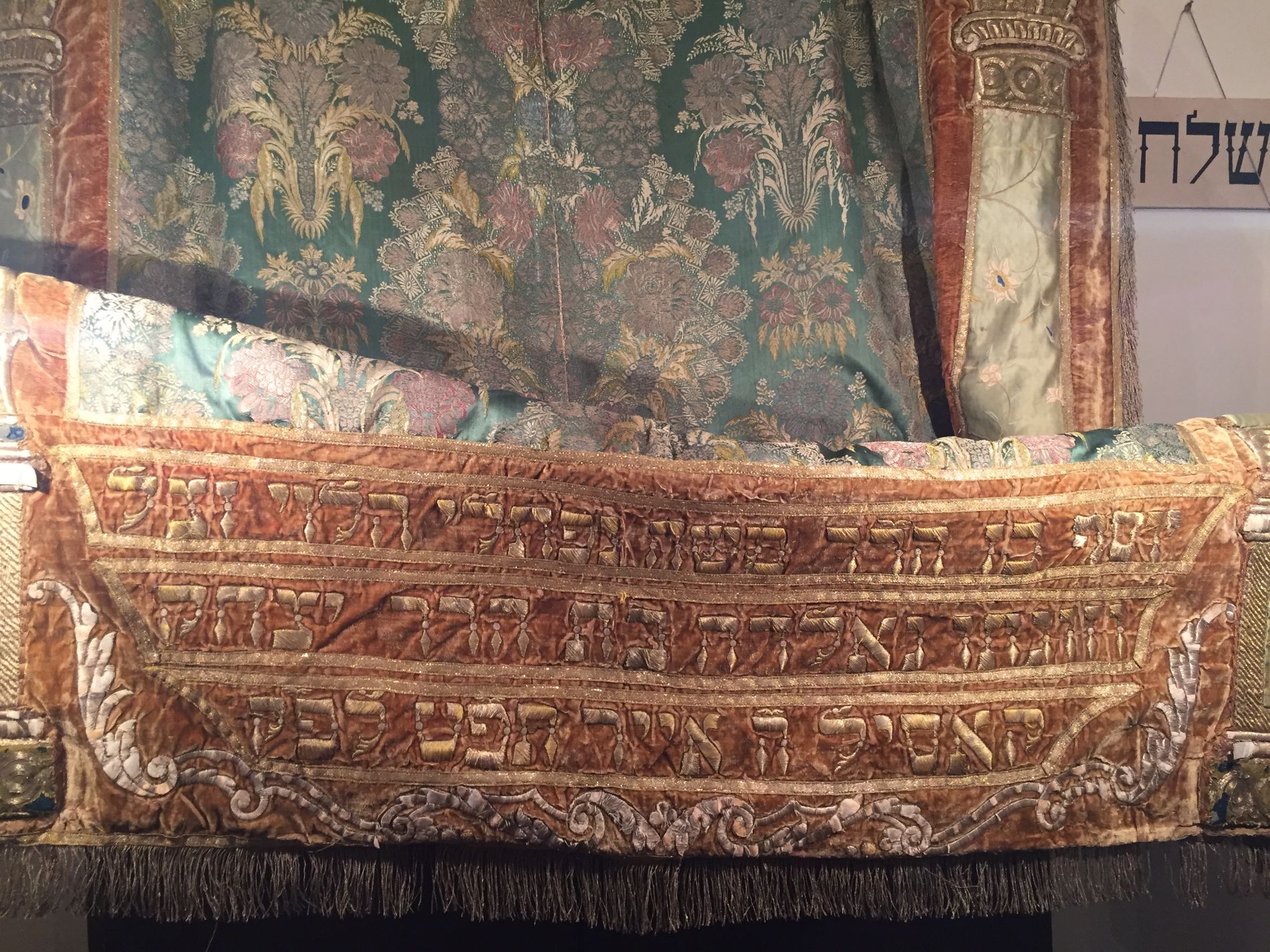Parochet is called the curtain in front of the ark (Aron hakodesh, the Holy Ark), in which the Torah scrolls are kept in the synagogue. There are no prescriptions for its appearance, but it is generally made of velvet or brocade, a floral silk fabric or with ornaments woven with gold or silver threads. On the days of the Great Holidays, Rosh Hashanah (New Year) and Yom Kippur (Day of Atonement), in most synagogues, the parochet is replaced by a white one. As these days are dedicated to repentance and purification, parishioners are recommended to wear white clothing, a symbol of spiritual purity.
The parochet in the picture, made of brocade and velvet, is currently in the small prayer hall Or Hadash (New Light, Hebrew) in the courtyard of the community headquarters in the Citadel, 10 Mărăşeşti str. A crown is embroidered at the top, under which are sewn, on a blue ribbon, the Hebrew words Keter Torah (Crown of Torah). The crown is flanked by two aggressive lions, guardians of the Torah, the most precious asset in Judaism. In the upper corners is a jug, a symbol for the tribe of Levi, an allusion to the descendants of the Halevi / Levi family of the Levites who served in the Temple in Jerusalem and helped Cohanim (the priests) to wash their hands.
Inscription on the bottom edge, embroidered with gold threads, in translation: Joseph, son of Rabbi Naftali Halevi, blessed be his memory of sage, and his wife Golda, daughter of Rabbi Yitzhak Kasil, the fifth day of the month Iyar, 1729.
Joseph, the son, and Golda, the wife of Rabbi Naftali Halevi, donated this parochet in memory of the rabbi.
Rabbi Dr. Jakab Singer recalls in his work, Temesvári rabbik a XVIII és XIX-ik században (Rabbis from Timişoara in the 18th and 19th centuries), published in 1928, that Josef Levi (Halevi), who gave the beautiful parochet to the Sephardic community in 1729, was the grandfather of József Rafael Levy (1796-1856), hazan (chorister) and shohet (ritual slaughterer) in the Fabric neighbourhood. (see the chapter Rabbis and personalities in community life). József Rafael Lévy's niece married Dr. Sándor Schossberger, chief physician and director of the children’s hospital until 1930.
We can imagine the journey of this object of worship. In 1729, it was offered to a house of prayer, then, in 1739, it was used in the hall under the “Prince Eugene” gate dome, 24 Eugeniu de Savoya str., and in 1762, it decorated the ark in the Sephardic synagogue in the other corner of the Jewish quadrangle, Mărăşeşti str./Gheorghe Lazăr str.. When this was demolished in 1905 to make way for the construction of the new community headquarters, the parochet arrived in the Sephardic synagogue of Fabric, which ceased to function in the 1960s. A few years ago, it was found in a box in the prayer hall next to the Synagogue in Fabric, from where it was moved to the small hall in the Community courtyard in the Citadel.
Sources
Jakab Singer, Temesvári rabbik a XVIII és XIX-ik században, 1928
Source: Getta Neumann, In the footsteps of the Jewish Timisoara. More than a guide. Brumar Publishing House, 2019


